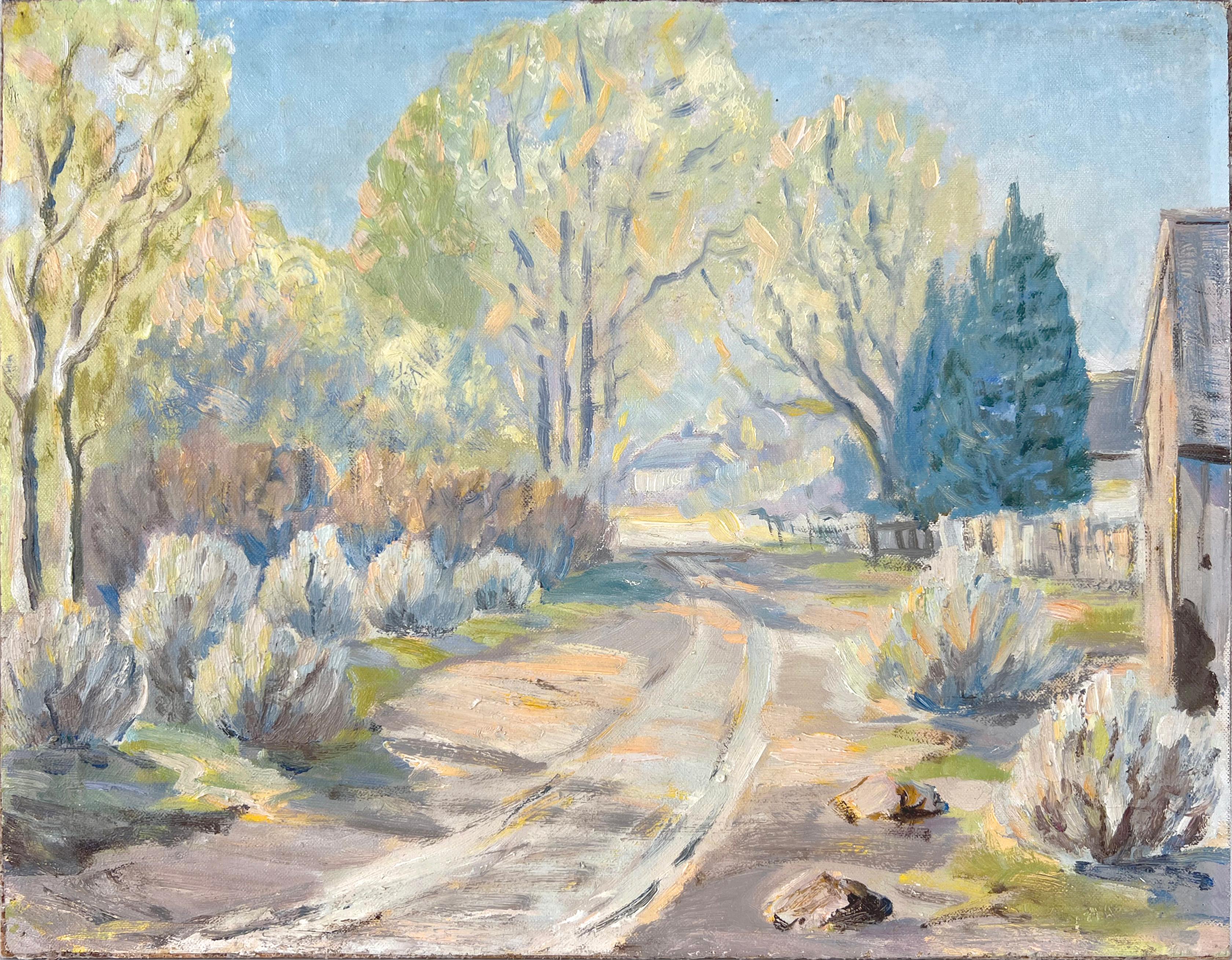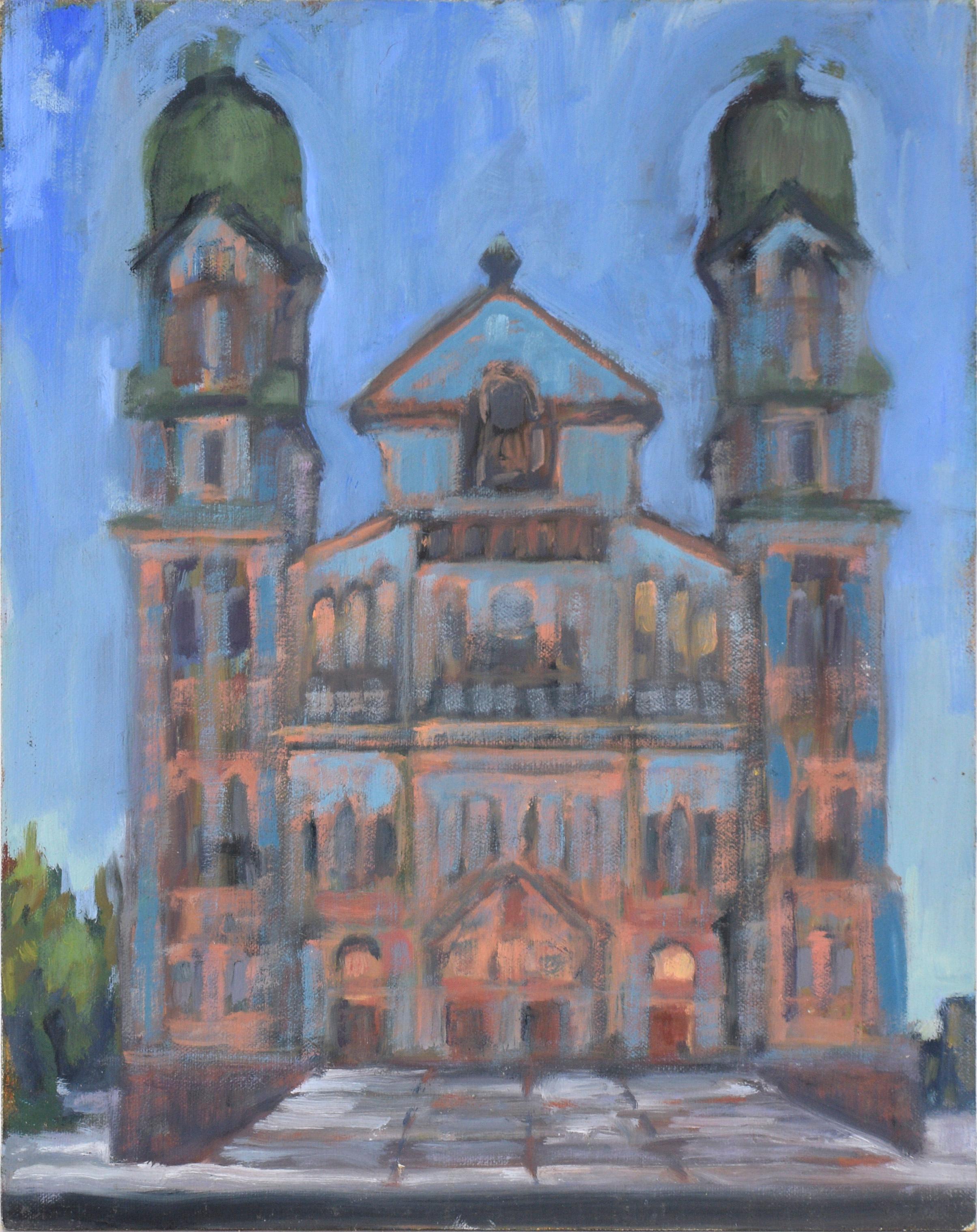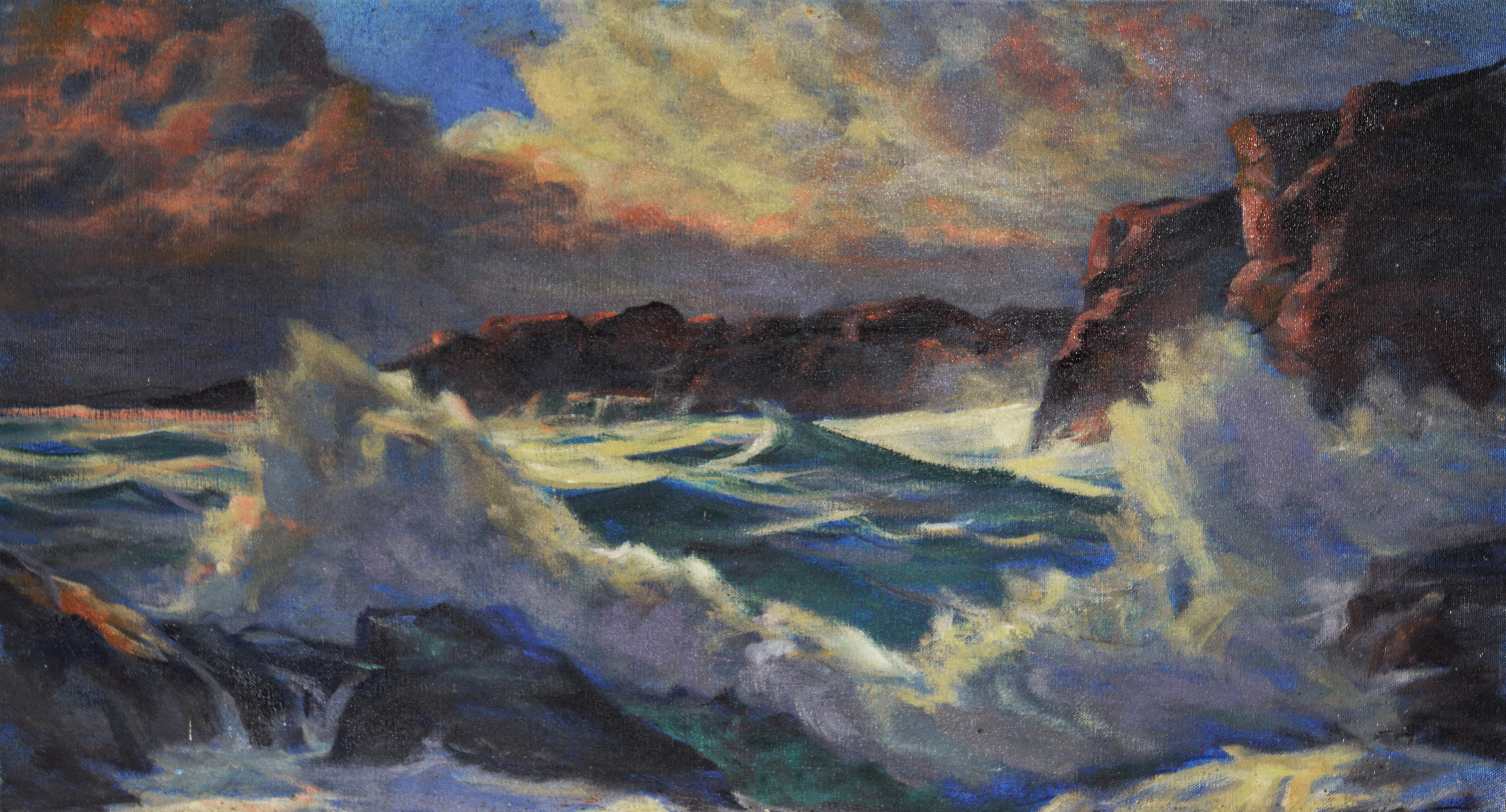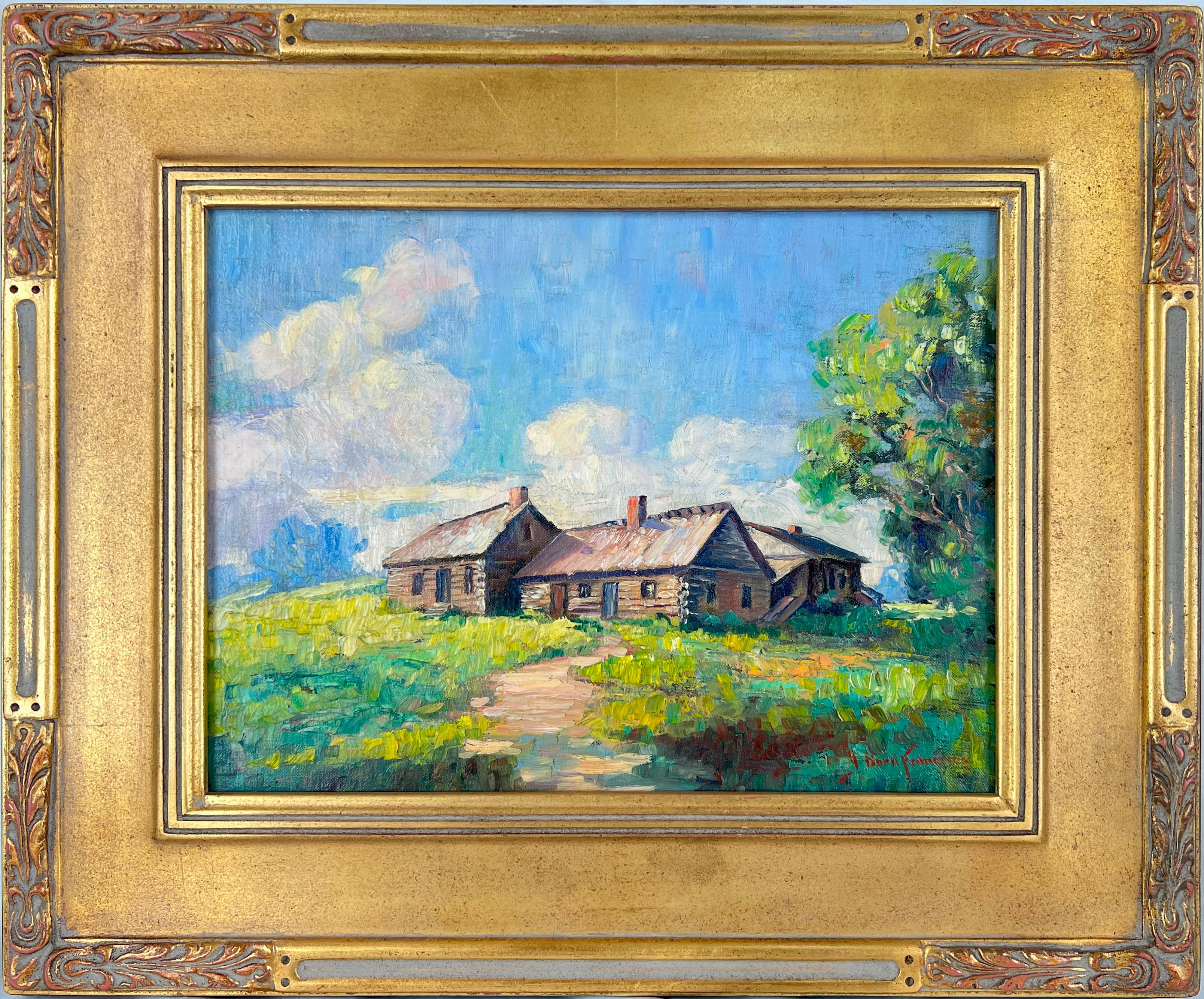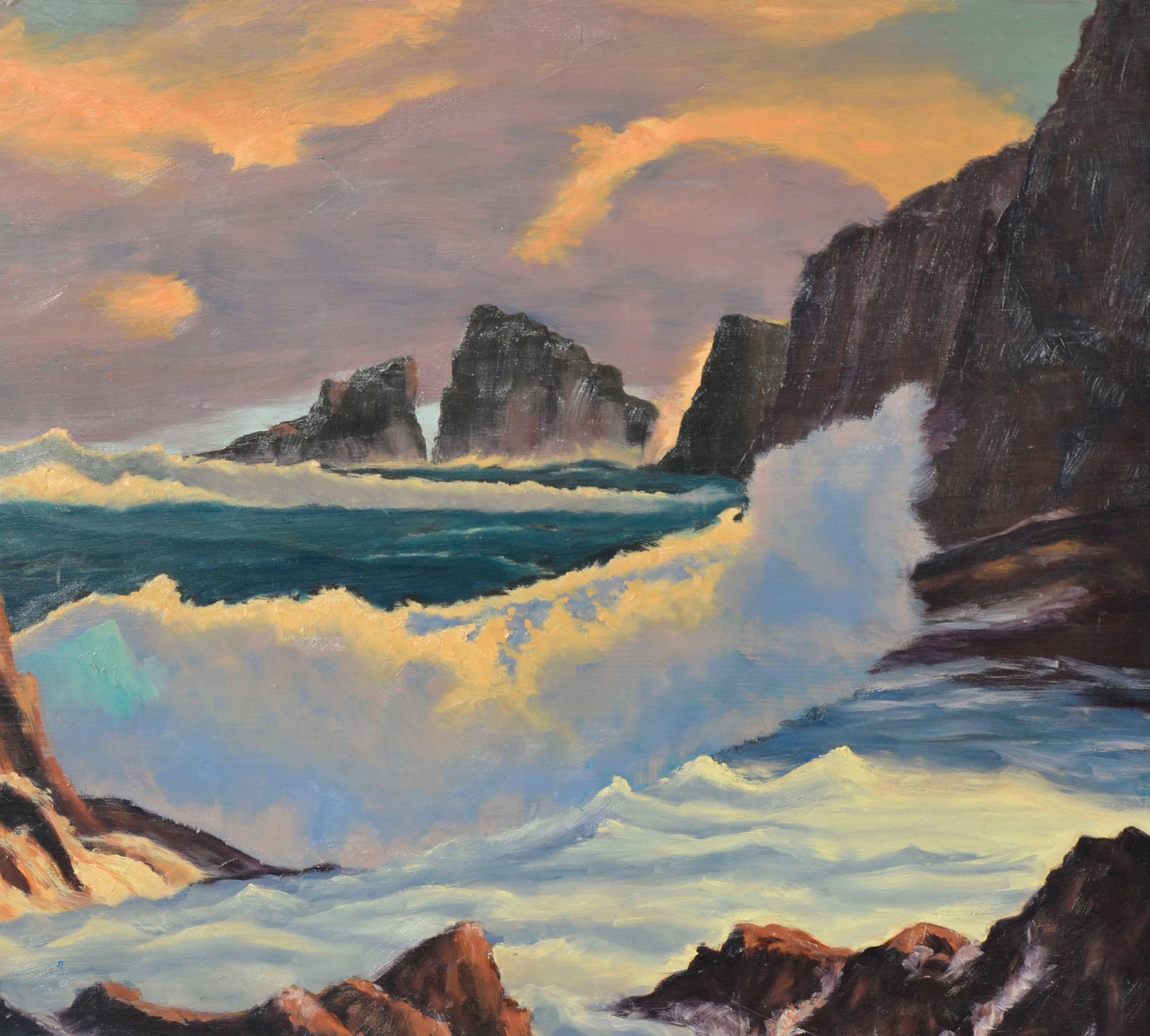Items Similar to "Lou's Meadow"
Want more images or videos?
Request additional images or videos from the seller
1 of 6
Peter Sculthorpe"Lou's Meadow"
About the Item
Jim’s of Lambertville is proud to offer this artwork by:
Peter Sculthorpe (born 1948)
Peter Sculthorpe was born in Ontario, Canada, in 1948. His talent was evident even as a child and developed rapidly in high school, where he was awarded an art scholarship in his senior year. He studied at the Pennsylvania Academy of Fine Arts, and the Hussian School of Fine Art under William Palmer Lear. He is a recipient of the Daisy Jamison Art Scholarship.
Sculthorpe's work is represented in private and corporate collections including General Electric, AT&T, DuPont, and Nabisco. His paintings are in the permanent collections of the Delaware Art Museum in Wilmington, Delaware; the William Penn Art Museum in Harrisburg, Pennsylvania; and the Brandywine River Museum in Chadds Ford, Pennsylvania.
He has presented his work in exhibitions including the American Watercolor Society, the National Academy of Design in New York, the Philadelphia Sketch Club, the American Artists Professional League, and Watercolor USA.
Among the awards he has received for his watercolors and oils are the American Artists Professional League Award in New York and an award from the Philadelphia Sketch Club.
- Creator:Peter Sculthorpe (1948, American)
- Dimensions:Height: 16 in (40.64 cm)Width: 19 in (48.26 cm)Depth: 2 in (5.08 cm)
- Medium:
- Movement & Style:
- Period:
- Condition:
- Gallery Location:Lambertville, NJ
- Reference Number:
About the Seller
5.0
Vetted Seller
These experienced sellers undergo a comprehensive evaluation by our team of in-house experts.
Established in 1997
1stDibs seller since 2014
36 sales on 1stDibs
Typical response time: 6 hours
- ShippingRetrieving quote...Ships From: Lambertville, NJ
- Return PolicyThis item cannot be returned.
More From This SellerView All
- "Winter in Lumberville"By Evelyn FahertyLocated in Lambertville, NJJim’s of Lambertville is proud to offer this artwork. Signed lower right Evelyn Faherty (1919-2015) Evelyn Faherty was born in the early 20th century and made her home in Yardley...Category
21st Century and Contemporary American Impressionist Landscape Paintings
MaterialsOil, Masonite
- "The Rivers Edge"By Evelyn FahertyLocated in Lambertville, NJJim’s of Lambertville is proud to offer this artwork. Signed lower right Evelyn Faherty (1919-2015) Evelyn Faherty was born in the early 20th century and made her home in Yardley...Category
20th Century American Impressionist Landscape Paintings
MaterialsOil, Masonite
- "Spring, Oakview"By Antonio Pietro MartinoLocated in Lambertville, NJJim’s of Lambertville is proud to offer this artwork by: Antonio Pietro Martino (1902 - 1988) Signed and dated lower right. Complemented by a period frame. Antonio Martino was ...Category
1920s American Impressionist Landscape Paintings
MaterialsCanvas, Oil
- "Sunlit House, Centre Bridge"By Clarence Raymond JohnsonLocated in Lambertville, NJJim's of Lambertville Fine Art Gallery is proud to present this piece by Clarence Raymond Johnson (1894 - 1981). Clarence Johnson was an important New Hope School Impressionist painter who was active from 1917 until 1935. Born in Ohio, Johnson began his studies at the Columbus Art School. He then came to the Pennsylvania Academy of the Fine Arts where he studied under Daniel Garber, Emil Carlsen, and Cecilia Beaux...Category
1920s American Impressionist Landscape Paintings
MaterialsCanvas, Oil
- "The Canal"By Edward Willis RedfieldLocated in Lambertville, NJJim’s of Lambertville is proud to offer this artwork. Signed lower left. Complemented by a hand carved and gilt frame. Illustrated in "Edward Redfield: Just Values and Fine Seeing" by Constance Kimmerle and the Pennsylvania Academy of the Fine Arts's Exhibition of Paintings by Edward Redfield (April 17 to May 16, 1909) brochure Edward Willis Redfield (1869 - 1965) Edward W. Redfield was born in Bridgeville, Delaware, moving to Philadelphia as a young child. Determined to be an artist from an early age, he studied at the Spring Garden Institute and the Franklin Institute before entering the Pennsylvania Academy from 1887 to 1889, where he studied under Thomas Anshutz, James Kelly, and Thomas Hovenden. Along with his friend and fellow artist, Robert Henri, he traveled abroad in 1889 and studied at the Academie Julian in Paris under William Bouguereau and Tony Robert-Fleury. While in France, Redfield met Elise Deligant, the daughter of an innkeeper, and married in London in 1893. Upon his return to the United States, Redfield and his wife settled in Glenside, Pennsylvania. He remained there until 1898, at which time he moved his family to Center Bridge, a town several miles north of New Hope along the Delaware River. Redfield painted prolifically in the 1890s but it was not until the beginning of the twentieth century that he would develop the bold impressionist style that defined his career. As Redfield’s international reputation spread, many young artists gravitated to New Hope as he was a great inspiration and an iconic role model. Edward Redfield remained in Center Bridge throughout his long life, fathering his six children there. Around 1905 and 1906, Redfield’s style was coming into its own, employing thick vigorous brush strokes tightly woven and layered with a multitude of colors. These large plein-air canvases define the essence of Pennsylvania Impressionism. By 1907, Redfield had perfected his craft and, from this point forward, was creating some of his finest work. Redfield would once again return to France where he painted a small but important body of work between 1907 and 1908. While there, he received an Honorable Mention from the Paris Salon for one of these canvases. In 1910 he was awarded a Gold Medal at the prestigious Buenos Aires Exposition and at the Panama-Pacific Exposition of 1915 in San Francisco, an entire gallery was dedicated for twenty-one of his paintings. Since Redfield painted for Exhibition with the intent to win medals, his best effort often went into his larger paintings. Although he also painted many fine smaller pictures, virtually all of his works were of major award-winning canvas sizes of 38x50 or 50x56 inches. If one were to assign a period of Redfield’s work that was representative of his “best period”, it would have to be from 1907 to 1925. Although he was capable of creating masterpieces though the late 1940s, his style fully matured by 1907 and most work from then through the early twenties was of consistently high quality. In the later 1920s and through the 1930s and 1940s, he was like most other great artists, creating some paintings that were superb examples and others that were of more ordinary quality. Redfield earned an international reputation at a young age, known for accurately recording nature with his canvases and painting virtually all of his work outdoors; Redfield was one of a rare breed. He was regarded as the pioneer of impressionist winter landscape painting in America, having few if any equals. Redfield spent summers in Maine, first at Boothbay Harbor and beginning in the 1920s, on Monhegan Island. There he painted colorful marine and coastal scenes as well as the island’s landscape and fishing shacks. He remained active painting and making Windsor style furniture...Category
Early 1900s American Impressionist Landscape Paintings
MaterialsCanvas, Oil
- "Spring on the Delaware"By Evelyn FahertyLocated in Lambertville, NJJim’s of Lambertville is proud to offer this artwork. Signed Lower Right Evelyn Faherty (1919-2015) Evelyn Faherty was born in the early 20th century and made her home in Yardle...Category
20th Century American Impressionist Landscape Paintings
MaterialsBoard, Oil
You May Also Like
- Vintage Grand Canyon Impressionist LandscapeLocated in Soquel, CAVintage Grand Canyon Impressionist Landscape Majestic impressionist landscape of the Grand Canyon in beautiful vivid colors by an unknown artist (American, 20th Century). The viewer...Category
1970s American Impressionist Landscape Paintings
MaterialsOil, Masonite
- California School - Desert Ranch Road Landscape Oil on CanvasLocated in Soquel, CACalifornia School - Ranch Road Landscape Oil on Canvas Imapsto oil painting of the California landscape by an unknown California artist working in the style of Sam Hyde Harris, anna Althea Hills...Category
1950s American Impressionist Landscape Paintings
MaterialsCanvas, Masonite, Oil
- Cathedral with Green Domes in Acrylic on MasoniteLocated in Soquel, CACathedral with Green Domes in Acrylic on Masonite The front of a large cathedral by an unknown central California coast artist Maria Pavao Hadsell (Portugal/American, 20th Century). The cathedral has two large towers, each with a large green dome at the top. It resembles St. Stephen's basilica in Passau, Germany. This piece has a loose style, but nonetheless has fine details in the architecture. Maria Pavao Hadsell was born in Portugal and is mostly a self taught artist originally from Portugal. Later she immigrated to the USA and lived in Massachusetts, then she moved to Sunnyvale, California. Studied watercolor in Italy, and with Los Gatos artist William Wray Signed "M Pavao...Category
21st Century and Contemporary American Impressionist Landscape Paintings
MaterialsOil, Masonite
- Against The Tide in Style of Edgar Alwin Payne - Oil on LinenLocated in Soquel, CAAgainst The Tide - Oil On Linen Oil painting of the California coastline at sunset in the style of Edgar Alwin Payne (American, 1883-1947). Deep grey clouds pose in the top corners with hues of pink light shining through. Choppy waves crash against deep red and brown rocks, as the whites of the wave hurl upward. The ocean shows tones of green, blue and yellow as the sunlight shines from above. Condition: professionally restored, previous reline onto Masonite with edge and corner wear. New UV resisting, non yellowing varnish applied. Unsigned. Unframed. Oil on linen on masonite. Image: 16"H x 30"W Edgar Alwin Payne was an American painter known for his landscapes, seascapes and western paintings. He was born in Washburn, Missouri on March 1, 1882, and began painting at the age of 14. He began his career by designing and painting scenery for the stage, and murals for homes and theaters. Primarily a self taught artist, he did though study briefly at the Art Institute in Chicago. Recognized as one of California's leading landscape artists, Payne earned the respect of his peers and art critics for his Impressionistic landscapes painted in the plein-air style. Possessing a reverence for nature, he especially loved the mountains. Frequently he took pack horses in the Sierra Nevada Mountain Range to the upper lakes to sketch and paint, there he glorified the areas majestic peaks and cobalt blue lakes. Payne Lake was named in his memory. Drawn to Europe, Payne trekked to and painted the elevated heights of the Swiss Alps, the colorful fishing boats of Concarneau Harbor and Brittany, France and the picturesque sailing vessels of Chioggia, Venice, Italy. He spent time capturing on canvas Arizona's Canyon De Chelly and Navajo horsemen traversing the region's arid tablelands. He painted California...Category
1940s American Impressionist Landscape Paintings
MaterialsLinen, Oil, Masonite
- High Sierras Log Cabin Lodge with Poppies Original Painting by J. Bond FranciscoLocated in Soquel, CAHigh Sierras Log Cabin Lodge Original Oil Painting by J. Bond Francisco Early 1900s era impasto painting of the High Sierras and a Log Cabin Lodge by California artist John Bond Francisco (American, 1863 - 1931). Well painted landscape of early 20th century California High Sierras will lush green grass and California Poppies. Signed lower right "J. bond Francisco." Presented in a newer, custom, giltwood frame. Image, 12"H x 16"W Frame 23.5"H 19.5"W x 1.25"D John Bond Francisco was born in Cincinnati, OH on Dec. 14, 1863. From an early age Francisco was drawn to both music and art. He studied the violin with Hermann Eckhardt and painting at the Cincinnati Art Academy for several years. He arrived in Los Angeles in 1887 and was so taken with the beauty of the place, he opted to make it his home. He soon continued his studies in Berlin, Munich, and in Paris at Académies Julian and Colarossi under Courtois, Bouguereau, and Robert-Fleury. While in Europe he studied the violin in the morning hours and painting in the afternoon. Upon returning to Los Angeles in 1892, he married and built a home at 1401 Albany Street where he lived for the rest of his life. Combining an art and music career, he helped form the Los Angeles Symphony Orchestra in 1897 and served as their first concert master. While teaching music and art at his studio, he made painting excursions into the surrounding countryside, often with his pupil Elmer Wachtel. He combined his Munich technique with that of the Barbizon's influence to produce paintings of California deserts and mountains that held dramatic light and shade contrasts. Later his palette brightened and he leaned more toward Impressionism. Francisco's studio in the Blanchard Bldg and his home were a mecca for both painters and musicians until his death on Jan. 8, 1931. Member: American Artists Club (Munich); Calif. Art Club; Laguna Beach AA; Painters & Sculptors of LA; Athletic Club (LA); LA AA. Exh: Calif. Bldg, World's Columbian Expo (Chicago), 1893; Chamber of Commerce (LA), 1894; Ruskin Art Club (LA), 1902-04; Blanchard Hall (LA), 1907; Alaska Yukon Expo (Seattle), 1909 (gold medal); Hallett Gallery (LA), 1910; Daniell Gallery (LA), 1912; LACMA, 1914; Friday Morning Club (LA), 1915; Biltmore Salon (LA), 1925. In: UCLA; LACMA; Orange County (CA) Museum. Edan Hughes, "Artists in California, 1786-1940" Out West, Sept. 1913; Graphic, 3-10-1918; Who's Who in the Pacific Southwest...Category
1910s American Impressionist Landscape Paintings
MaterialsMasonite, Oil, Linen
- Large Mid Century California Nocturnal Seascape (Double Sided Painting)Located in Soquel, CABeautiful double-sided painting of a California nocturnal seascape on one side and a Sierra mountain scene on one side on the other by William L. Hughes. Signed "W. L. Hughes" bottom...Category
Mid-20th Century American Impressionist Landscape Paintings
MaterialsOil, Masonite
Recently Viewed
View AllMore Ways To Browse
Lou Lou
William Penn
William Meadows
Jim Palmer
Indian Portrait Oil Painting
Sheep And Landscape Framed Oil Paintings
Automobile Painting
French Rural Scene
French Victorian Painting
Green Salt
Italian Gardens Scenes
Nevada Landscape
Notre Dame De Paris
Robert Hudson
S Butler
Snow Village
Stephen French
Used Wooden Easel

